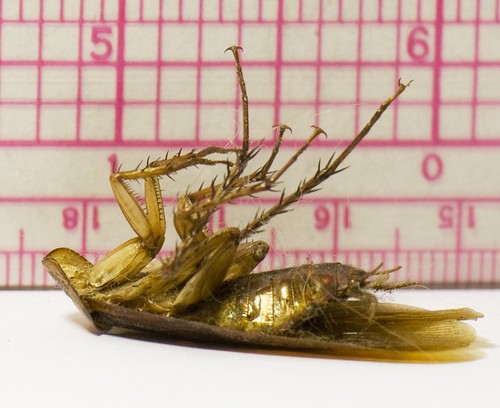
Mystery cockroach found in NYC apartment.
mage: Brenda Tan and Matt Cost.
Moving overseas has been a challenge, but worst of all for me has been the fact that my writing has suffered. I still read scientific papers and science news stories, but have been unable to find the time necessary to write these stories for you. Hopefully, my life is returning to some semblance of predictability, which means I can now start working again. I have several half-finished stories that I am working on and will be publishing over the next few days. The first story I want to share with you is about a simple high school DNA barcoding project that yielded an astonishing discovery; a new species that has been living in one of the largest urban areas in the world, New York City.
As a New Yorker, I am both surprised and not surprised at the same time by the discovery of a new species of cockroach hiding in our cabinets and showers and running around under our feet. I mean, where else would a new species of pest insect most likely be found?
Like an episode from the popular television series, CSI: NY, two high school seniors sought to identify hundreds of specimens that they had collected throughout Manhattan. Their goal? To identify the species by analyzing at a small portion of their DNA using a technique known as "DNA barcoding." As a method for quickly identifying species, DNA barcoding has become increasingly more accepted within the previous six years.
The two "DNAHouse investigators" made a number surprising discoveries using DNA barcoding, including mislabeled food items, and -- most astonishing of all -- the discovery of a species of cockroach that is new to science. The insect, which looks like the American cockroach, Periplaneta americana, a widespread pest in NYC and other large cities, turned out to have a different "DNA barcode" from that species.
A DNA "barcode" is a short nucleotide sequence shared between organisms. Although the identity of the "barcode" gene is not standardized as yet, a 648-basepair long region of the mitochrondrial cytochrome c oxidase subunit I (CO1) gene is typically used as a DNA "barcode" for most eukaryotes. This genetic region is ideal because it is nearly universal, it is small and easily sequenced using current technology, and it contains large nucleotide variation between species (but relatively small variation within a species). Additionally, as of 2009, there were more than 620,000 known CO1 sequences from over 58,000 species of animals -- larger than databases available for any other gene. These features allow for direct sequence comparisons and analyses between different species.
"It's genetically distinct from all the other cockroaches in the database," said DNAHouse investigator Brenda Tan. Ms. Tan, a senior at Manhattan's Trinity School, worked on the project, along with fellow classmate Matt Cost.
If you feel you have an infestation of domestic cockroaches, contact Clark Pest Control TODAY!

